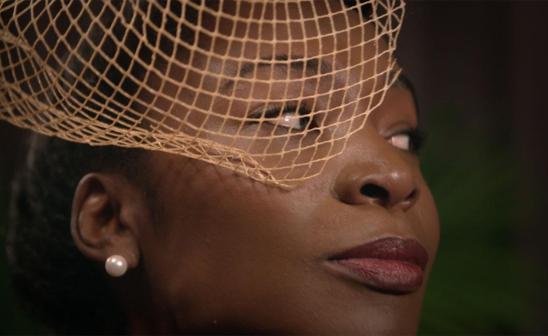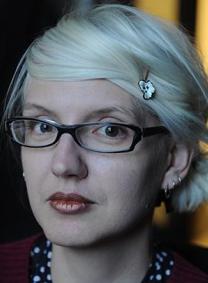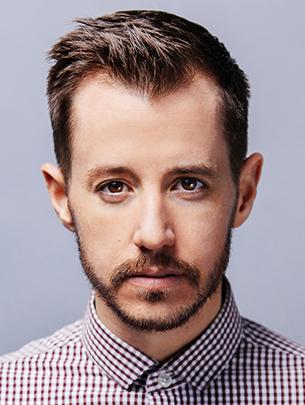New documentary reinterprets archives to illuminate trans lives

This article was originally published by UChicago News. Read the story on their site here.
Now a feature-length film, ‘Framing Agnes’ connects trans history to current challenges
Making use of decades-old archives, a new documentary blends fiction and nonfiction to explore the legacy of Agnes—a transgender woman whose words are preserved in a 1958 sociological case study. By showcasing and reinterpreting moments from the past, the creators of Framing Agnes want to give viewers a way to connect these stories to the present.
“We hope that the film is less about understanding the trans subjects, and more about reckoning with the structures of medicine and media that continue to impact and control trans lives,” said director Chase Joynt, a former postdoctoral fellow at the University of Chicago.
In 2019, Joynt premiered a 19-minute version of the Framing Agnes, which he co-created with Assoc. Prof. Kristen Schilt. This January, a feature-length version debuted at Sundance Film Festival—drawing praise from The New Yorker, which described it as “a film of quiet but decisive radicality.” Framing Agnes has since played in over 50 festivals, winning six awards internationally.
Framing Agnes includes talk-show-style reenactments that feature director Chase Joynt as UCLA sociologist Harold Garfinkel. Zachary Drucker plays the titular role of Agnes, one of many transgender people whom Garfinkel interviewed.
Video courtesy of Level Ground
In the film, Joynt plays a version of the late UCLA sociologist Harold Garfinkel, whose archives contained interviews with “Agnes”—a pseudonym—and many other gender nonconforming people. These talk-show-style reenactments are juxtaposed with interviews with trans actors and scholars, drawing a historical throughline in understanding the systemic obstacles trans people face.
“The easy assumption is that the past must have been terrible and the present must always be getting better,” said Schilt, a sociologist of culture and the director of UChicago’s Center for the Study of Gender and Sexuality. “Yet, in the film, you see people talking about their families and their loved ones, and about what we might now call trans and queer social worlds that offer great support and friendship.
“And, at the same time, people faced employment discrimination, social rejection and police violence—all issues that trans and nonbinary people continue to experience today.”
In the following Q&A, Joynt and Schilt discuss the making of Framing Agnes, its reception among viewers, and their hopes for future projects.
The feature-length version of Framing Agnes is making festival rounds amid a disturbing rise in anti-trans legislation and rhetoric across the country. Has this shaped how you talk about and present the film?
Schilt: Part of the project of the film is to push back against the “tipping point” or progress narrative from the mid 2010s that suggested that trans people had “made it” in terms of cultural representation in the media and that legal and social acceptance would soon follow. As historian Jules Gill-Peterson makes clear in the film, there is a very clear throughline between the medical and legal regulation of gender affirming care then and now—which we say not to disparage the important work that has been done to increase access for trans people but rather to acknowledge that this increased access is not distributed equitably across the country, or across racial and ethnic groups and economic locations. Our goal is to show how the stronghold of these regulatory institutions helps to bolster and support anti-trans attitudes and legislation both then and now.
Joynt: We are also interested in the role that documentary has played in shaping how North American publics understand and encounter trans subjects and communities. Through engagement with the technologies of representation—whether it be the industrial talk show camera or the intimacy of a Super 8—we are meditating on the ways cameras and frames have set the terms of our understanding. And perhaps more importantly, the enduring consequences of those decisions.
Framing Agnes made its debut as a documentary short at the 2019 Tribeca Film Festival. What was the response to the film like then, and how has the project changed in becoming a feature film?
Schilt: We had a great time at Tribeca with the short and, for the people who watched the shorts program, Framing Agnes was well-reviewed. For me, as a sociologist rather than a filmmaker, it was exciting to get to see the short in actual movie theaters and to be able to share the film with both strangers and friends. I think that the short works really well as an educational tool for people teaching gender studies, sociology and trans studies. It is 19 minutes long, which works well in a classroom, and it is much more pedagogical than the feature. It focuses more on the sociology part of the story. But, the feature gets to go much wider and to tell a larger story about transgender cultural representation and current day trans politics. That range was simply not possible in the short.
Joynt: For me, the most compelling distinction between the short and the feature is the breadth and depth of engagement with trans politics both historically and in the contemporary moment by our actor-collaborators. The years between the short and the feature were both expansive and restrictive for trans people and the project engages this tension between visibility and vulnerability by not letting audiences settle into easy conclusions about the many paths toward social change. The time between the short and feature also allowed us to fundraise and approach the story with more resources for production design, cast and post-production.
“Part of the project of the film is to push back against the ‘tipping point’ or progress narrative from the mid 2010s that suggested that trans people had ‘made it.’”
What did you want to accomplish with the feature film that wasn’t possible with the documentary short version?
Joynt: The extended runtime of a feature allowed us to welcome two new cast members, Jen Richards and Stephen Ira, as well as Jules Gill-Peterson as interlocutor and guide. Jules offers audiences a generous hand and skillfully connects historical and contemporary contexts while seamlessly code switching between expert, subject, participation, archivist and agitator. Jen and Stephen emerge as critical interpreters of hidden histories and allow us to ask a set of more complex, interlocking questions.
Did the making of the feature film change your conception or understanding of Agnes and the other trans people whose lives you glimpsed in the archival documents?
Schilt: I wouldn’t say that it changed my perception. What it did, I think, was bring people to life off of the page. As a researcher, I can read pages and pages of interview transcripts from the 1950s and the 1960s, and I can make some assumptions about how people were responding—their tone, their inflection in the words. But, it is just an assumption—is that a nervous laugh, is it a sarcastic snort? It is just how I read it from the context. The actors in the film were able to bring their own assumptions to the text and embodied these responses. And, I really appreciated seeing their own take on the person and their lives, and so appreciated the care and attention they gave to bringing these people to life on the screen.
Joynt: I think people take from the film only what they need from it—this means that some leave knowing more about Agnes and the specifics of Garfinkel and UCLA, while others couldn’t care less and leave attached to other subjects and ideas. Through de-exceptionalizing Agnes, we hope that the film is less about understanding the trans subjects and more about reckoning with the structures of medicine and media that continue to impact and control trans lives.
Did you encounter any unexpected challenges in the making of the feature film?
Schilt: Ha! Like everyone in the last two years, we did—the COVID-19 pandemic. We did most of the filming for the feature in 2019, with the plan to complete the work in early 2020. All filming work shut down in California to protect everyone’s health. We weren’t able to pick up the work again until 2021 after the vaccine rollouts were widespread and the filming landscape felt safer for cast and crew. We managed to film the remaining parts of the feature over three days in 2021 in a lull between the Delta variant and the Omicron variant. We remain so grateful to our cast and crew for pulling this last shoot together.
Joynt: Yes, I second everything Kristen has offered and would only add more exclamations.
What hopes do you have next for this film, or for other future projects?
Schilt: One thing that we have been talking about is how to create space for more collaborative visual projects like Framing Agnes. There are so many researchers inside and outside the academy that have important research findings and projects to get out in the world. And, unfortunately, the audience for academic books and articles seems to be growing smaller and smaller every year. We would love to create an incubator that helps researchers conceptualize their work through a visual medium, whether that be a documentary feature film or short, a short animated presentation, or even a video game in the “serious games” genre. A visual format creates so many more opportunities to engage with people who care deeply and are impacted by our work. Our plan is to find an institutional home for this incubator project and to apply for seed money and to fundraise from donors who are interested in rethinking how we bring scholarly research into the public.
Chase and our producer Samantha Curley have a production company, Level Ground, that is starting to do this important work.
“The film is ... about reckoning with the structures of medicine and media that continue to impact and control trans lives.”
Joynt: Level Ground Productions is a collaboratively run production company invested in projects that push the boundaries of form and address urgent socio-political issues. We exist, in part, to support the Level Ground Collective—a 501(c)3 nonprofit artist collective and incubator that centers queer, trans and POC artist-led projects and initiatives. Both the Level Ground nonprofit and the production company reflect the same values and mission, including a commitment to experimentation, collaboration, and empathy. Every year, Level Ground Productions shares 20% of our profits with the Collective.
It might seem strange to answer your question here by explaining our business model, but we believe that how a project gets made is as important—if not more so—than the project itself. And so, with Kristen and our many collaborators, we are dreaming up new sustainable systems that can better support projects and communities that are imagining better worlds.
 THE UNIVERSITY OF CHICAGO
THE UNIVERSITY OF CHICAGO



